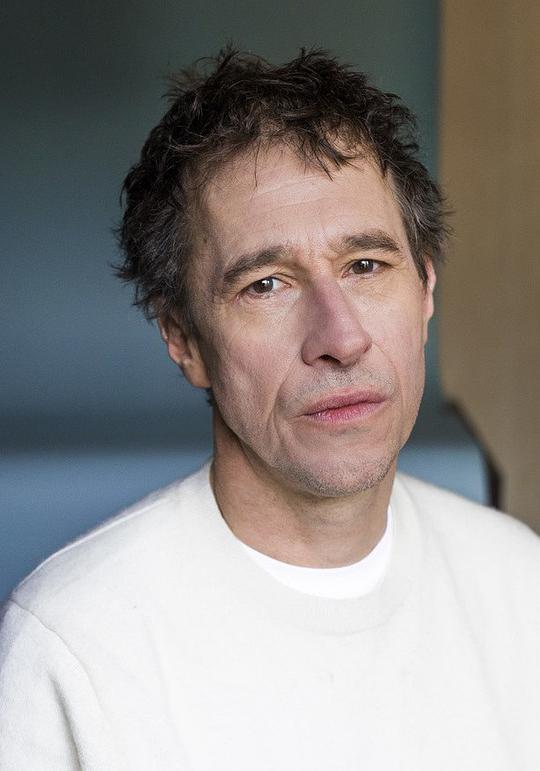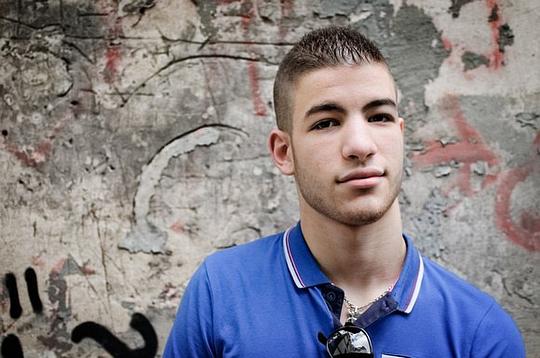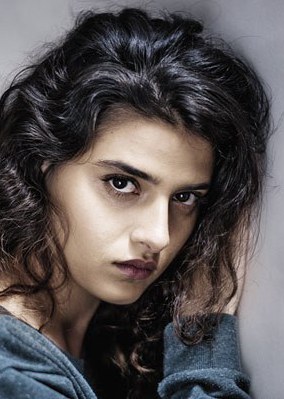夜行盛宴 Nocturama(2016)

又名: 流动的盛宴 / Paris est une fête
导演: 贝特朗·波尼洛
编剧: 贝特朗·波尼洛
主演: 费尼肯·欧菲尔德 樊尚·罗蒂埃 拉巴·纳伊·乌费拉 Laure Valentinelli 马纳尔·伊萨 Hamza Meziani Martin Guyot 贾米尔·麦克雷文 阿黛拉·哈内尔
制片国家/地区: 法国
上映日期: 2016-08-31(法国)
片长: 130分钟 IMDb: tt4795546 豆瓣评分:6.6 下载地址:迅雷下载
简介:
- 贝特朗·波尼洛取名于海明威名著的新片《流动的盛宴》(Paris est une fête)正在巴黎新桥一端废弃十年之久的商场Samaritaine内部取景拍摄,电影讲述了一群年轻的反抗分子白天在巴黎各大标志性地点放置炸弹,夜晚躲藏于百货商场寻求庇护的故事,导演把自己的这第七部长片形容成是“静止的西部片”。
演员:
影评:
难道我们会喜欢《大象》(2003)这样的电影?摄影机紧随着人物,就像在电子游戏中主观视角永远贴身于游戏中的某个角色,以获得切实的体验感。这是被一个完整意识掌控的影像,出自导演的预前设定,并被那台宛若机器般自动运转的摄影机所完成。
《夜行盛宴》中的角色走动,看似与《大象》相似,实则已经失去了对距离的精准测定。在这部电影的前半程,通过几位主角的交互出现,整座巴黎的城市空间展示在角色不间断地穿行中。一开始,我们并不清楚他们要干什么——他们忙着倒地铁、忙着出门、忙着穿过大街小巷、忙着用手机交流信息……只是到最后我们才明白。
这种无序的混乱正反映出影像没有为一颗完美的大脑所掌控。
这颗完美的大脑出现在《大象》中。就像电子游戏的运作总是已经被预先编码的程序所掌控,《大象》中人物的行动与时间线的交织其实早已为导演的意识与摄影机的运作这双重强力所控制。
在《夜行盛宴》中,贝特朗·波尼洛放弃了导演的强权——无论这是有意,还是掌控能力失调所致——我们都感知到了一类与众不同的新影像:难道它还可以被分析、被解码、然后重新生成?
这或许是未来电影的某种趋势:也即导演开始削减自己在电影摄制中的领导权力,让影像在“无中心”的状态中自动生成。
《米歇尔·福柯》(2016)不正是这样一部电影吗?汪民安抽身而出。或者《持摄影机的人》(2016)中基尔斯滕·约翰逊从为别人拍下的素材中重现拼接出一部新作品,“作者电影”这个根深蒂固的概念是不是也同样在消逝……?
同样,那条被摄影机的运动标示出来的逃逸线此刻也宣告瓦解了,它不再能迈向死亡。这是它不再能生成为法西斯影像的原因,它隐藏起自我的意识。而这种自我意识导致了《大象》的硬化,同样也导致了《雪山之家》的失败。
- 炫目的形式很容易就让我联想到2003年金棕榈作品《大象》,甚至连主题都是与杀戮有关。显然,贝特朗·波尼洛(Bertrand Bonello)对电影形式有甚为强烈的要求,前作《圣罗兰传》就是一部碎片式的人物传记片。这部讲述巴黎无政府主义分子的新片也在形式上大玩花样,前半部分摄影机跟随着这群年轻人穿梭在巴黎的地铁、街道、内政部、银行等等公众场所,几乎没有对白的设计让观众注意力全都投放在他们放置炸弹的手段,同时营造出隐隐不安的悬疑气氛。伴随着这些精美的场面调度设计,观众的脑子里开始出现问号:他们究竟是谁?他们为什么要这样做?
爆炸之后的第二个段落本来可以有所发挥,至少得让观众有深入思考的空间。然而,导演仍然没有给出明确的提示。相反,在迷宫般的百货商场里,这群无政府主义者逐渐表现出对物质的贪恋与享受(在批判资本主义与消费主义?),暂时与世隔绝的他们甚至幻想第二天能安全回家过上正常的生活(当爆炸是一场无伤大雅的游戏?)。这个段落太多无用的符号和象征(面具、音乐、男扮女装、乞丐夫妇)不断扰乱着核心主题的阐述,枯燥单调的场面调度无疑也令观众越来越感到不耐烦,直到警察发起进攻的高潮才得以终结。
从形式上来看,电影表现形式值得借鉴之处有不少。反复用不同人物角度及空间变换去展现同一段时间的流逝,变相有效地拓展物理时空的长度,这一点相当花心思。相比之下,后半部分的时空处于停滞,反而是音乐运用颇见心思,刺耳的乐音与节奏反衬出人物的内心躁动与变化。
然而,作为影片核心部分的人物背景与作案动机一直处于缺失状态,令人难以理解及产生共情,自然更别提批判的对象主题。这仿佛就像是一个外表精美的房屋,里面却是装修简陋的布置,还随时会有倒塌的可能,实在令人提心吊胆。 贝特朗·波尼洛的电影总是带着一种简单与复杂并行的张力。青春片、惊悚片、剧情片、政治片,它们同时是很多东西。阶级、种族、后殖民、社会与青春、对法国身份的质询是枝蔓中的主干。他从不给你看一棵树,而是通过叶片、枝条、树干的某个瞬间来揭示树的全貌。一个角色的行动就是这个角色的全部,在具体而微的行动中,情感和意义自现。
前半段是一群巴黎青年周密部署的恐怖行动,人物不具姓名,因为他们只是整体的一环。波尼洛用作曲家的敏锐来剪辑和调度。每个角色的情感与意图在一连串的闪回中浮现。有时只闪回几分钟甚至几秒钟,以呼应其他角色的作为,重新锚定一个时刻,在动态中揭示个体行为与整体行动的关联。后半段是藏身奢侈品商场等待迟迟不来的猎杀。到处是设计师品牌,恐怖分子徜徉其间,玩玩具、试装、化妆、泡澡、上床、卡拉OK。电视前一秒用来娱乐,将现实挡在外面,下一秒用来看新闻,现实被重新引入,而最后也正是这电视向他们宣布了死讯。波尼洛故意隐瞒信息,但又给出恰到好处的信息,这让观影变成巧妙的游戏。《夜行盛宴》让人同时想起布列松的《很可能是魔鬼》和罗梅罗的《活死人黎明》,多么牛逼的事。
拒绝就人物动机给出清晰的解释,波尼洛似乎要与其他政治电影划清界限。然而他又在人物含蓄跳跃的对话中给出了答案。其中一个恐怖分子讲述自己的一篇政论文时说,社会的崩坏总是紧接暴力的重建,然后是文艺复兴。如果这是政治电影,它讲的是回避的政治。青年说什么不重要,重要的是所有人务必听到青年的声音。

A proponent of "New French Extremity", which brackets names like Bruno Dumont, Catherine Breillat, Gaspar Noé and more recently, Julia Ducournau, Bertrand Bonello, who happens to appear in the latter’s Palme d'or winner TITANE (2021), seems to have a more level-headed disposition, his Yves Saint Laurent biopic SAINT LAURENT (2014) is a bedazzled panoply of haute couture and fast-consumed interpersonal relations which tactfully betrays a cold gaze of frivolousness and skepticism in its kernel. Such a severe look on humanity doesn’t abate in both NOCTURAMA and THE BEAST.
Starting in medias res - a brigade of youngsters betake themselves to various destinations in Paris by metro or on foot, either with seething agitation and trepidation, or aplomb, to carry some unspecified missions - NOCTURAMA grabs its audience by the throat roundly and refuses to let it go for the first hour with a kinetic motion and an engaging editing momentum. After a blunt assassination exacted by Greg (Rottiers), the oldest among the outfit (most of them are college age, save for one minor), and probably the mastermind, it clicks that they are revolutionaries-turned-terrorists. Then flashback pops up intermittently, shedding some light on incidents happened before the series attacks, but the whys and wherefores are never fully expounded.
After wreaking havoc with planted bombs (one on the upper stories of a high-rise, one inside a government building), and setting fire on automobiles and on the gilded bronze equestrian sculpture of Joan of Arc, the group retreats to the emporium "La Samaritaine" to lie low for the night (minus two going AWOL, including Greg), arranged by a mole among the building’s security team. Henceforth, the film, like the group of restless whippersnappers (unified by their lame music taste as the film might imply), who are gets bogged down in the stuffy, closed areas and passively wait for something horrible to occur, also languishes in a loopy cul-de-sac. Only David (Oldfield), dares to venture out and keep his finger on the pulse, seeking a sort of validation for their collective enormities, offered by an airy Haenel in a cameo appearance.
By being tight-lipped about the young terrorists’ backstories, any effort for empathy and compassion is shorn off by Bonello. You don’t try to rationalize terrorism, and every perpetrator must pay for such a grave crime, without exception. That is why he arranges a startlingly indiscriminating picking-off denouement for all of them, regardless of their color, gender, race or age, which is pretty agonizing to watch as you cannot turn away from beholding their doom, one by one, utterly ineluctable. But Bonello’s maximalist fiat is firmly implemented to deter any offender-to-be. Although his script fails to make a plausible justification about how the police can pin down these terrorists on the premises with precision, which can be judged as a copout for the sake of diegetic convenience.

THE BEAST, a quixotic reimagining of Henry James’ novella, is infinitely more ambitious and metaphysical. A modish three-tier fable about the vast profound of human emotion getting wiped out to oblivion by artificial intelligence.
Year 2044, Gabrielle (Seydoux) decides to purify her DNAs in order to find a better job, as emotions are considered as a demerit for its instability. During two purifications, Gabrielle relives her two separate past lives, one in 1910, another in 2014, where she is drawn to a young man named Louis (MacKay, expanding his ranges from a gentleman to a head case with considerable ease and assurance), who, in both cases, unsettlingly becomes the death of her.
The 1910 part is set in Paris and wreathed in a tactile belle-époque lushness. Gabrielle is a pianist married to a doll factory owner Georges (Scali), perpetually bedeviled by an unshakable sense of ominousness, which she only confides to Louis, she is compelled by the pull to leave Georges for Louis. But kismet has its own design on the star-crossed lovers inside the highly inflammable doll factory.
The 2014 part is in Los Angeles, Gabrielle is a model house-sitting in an architectonic residence, whereas Louis is an incel whose mental faculty dangerously escalates into a misogynistic fixation. Following Gabrielle from the nightspot she patronizes every night to her residence, Louis sets his sights on her. A the-fat-is-in-the-fire apprehension hovers around until one fateful night. Gabrielle, overlooking her fear and prescience form Gina, a medium on the internet (Hoskins, a hauntingly bedraggled soothsayer dwelling in the Ethernet under the garish red light), opens her door to Louis and consoles him with her corporeal warmth. Only the frozen heart of a radicalized incel doesn’t thaw easily, Gabrielle cannot escape from the talons of the so-called “beast”, her distressing fate is an alarming reminder of the grievous threat of unresolved inceldom.
Back to 2044, after two attempts, Gabrielle is diagnosed as an outlier failing the purifying procedure. Then she again tries to reconnect with Louis in this timeline, who previously expresses his concerns about the DNA purification. Only it is all too late when Gabrielle realizes that Louis has already his emotions purged, snuffing her last chance to communicate with him on the strict human basis. THE BEAST culminates in Gabrielle’s desperate screaming, bringing about a Lynchian absurdity that serves up an outcry to a future where humanity would be dying a slow death.
In both films, Bonello act like a merciless surgeon dissecting the hazards of our society with plumb dispassion, but in distinctive modalities. THE BEAST is, by turns, elegant, uncanny (a humanoid doll in the person of Guslagie Malanda is quite a knockout), tormenting and fatalistic, propped up by a career-best Seydoux effecting a heterogeneous selection of affect and quiddities; whereas NOCTURAMA is deceptively on cruise control when everything is in motion or everyone is anonymously spurred by a mission, clunky when acedia settles in. However, Bonello’s analytic capacity doesn’t really in fine fettle, he is more capable of highlighting his convictions than eloquently and instructively cobbling together a reflective yarn (the 1910 part in THE BEAST is tediously and mystifyingly patterned upon James’s original texts). In the event, the “extremity” in his works might well derive more from his pessimistic ideology about our species than from his ruthless methodology.
referential entries: Bonello's SAINT LAURENT (2014, 7.1/10); Anne Fontaine's REINVENTING MARVIN (2017, 6.3/10); Bruno Dumont’s FRANCE (2021, 7.0/10).
Title: Nocturama
Year: 2016
Country: France
Language: French, Belgium, Germany
Genre: Drama, Thriller
Director/Screenwriter/Music: Bertrand Bonello
Cinematography: Léo Hinstin
Editor: Fabrice Rouaud
Cast:
Finnegan Oldfield
Laure Valentinelli
Hamza Meziani
Manal Issa
Martin Petit-Guyot
Jamil McCraven
Ilias Le Doré
Rabah Nait Oufella
Vincent Rottiers
Robin Goldbronn
Luis Rego
Hermine Karagheuz
Adèle Haenel
Eric Herson-Macarel
Rating: 6.7/10
English Title: The Beast
Original Title: La bête
Year: 2023
Country: France, Canada
Language: French, Englihs
Genre: Drama, Romance, Sci-Fi
Director: Bertrand Bonello
Screenwriters: Bertrand Bonello, Guillaume Bréaud, Benjamin Charbit
based on the novella "The Beast in the Jungle" by Henry James
Music: Anna Bonello, Betrand Bonello
Cinematography: Josée Deshaies
Editor: Anita Roth
Cast:
Léa Seydoux
George MacKay
Guslagie Malanda
Martin Scali
Dasha Nekrasova
Elina Löwensohn
Marta Hoskins
Kester Lovelace
Julia Faure
Rating: 7.6/10





